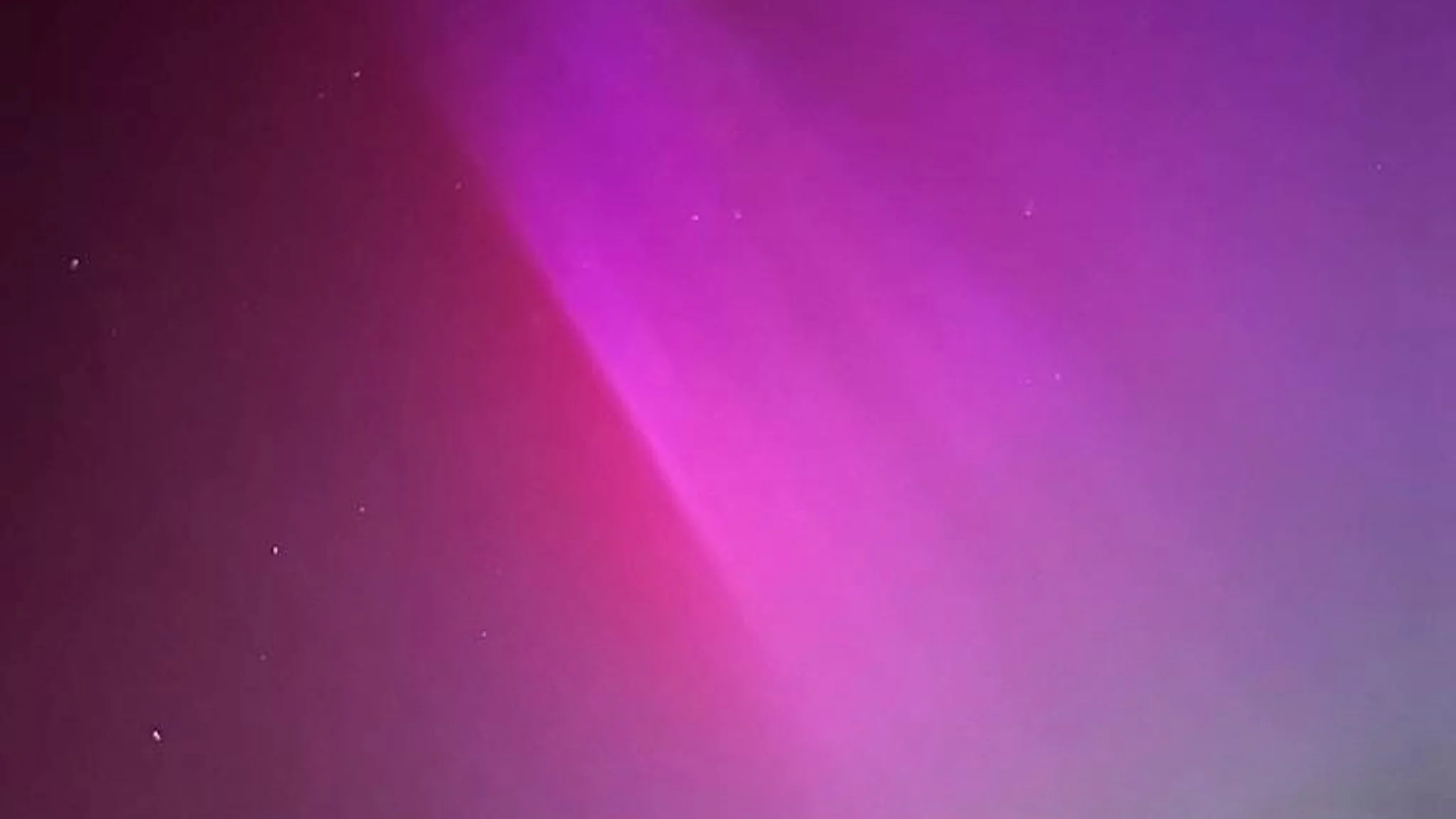across the UK the Northern Lights were visible due to a severe solar storm
The impressive Aurora Borealis, usually only visible from northern parts of the British Isles, was visible across large parts of the UK overnight, including Scotland, Wales, Northern Ireland and, unusually, southern England.
It comes after America’s National Oceanic and Atmospheric Administration (NOAA) issued its first severe solar storm warning since 2005 yesterday as a huge geomagnetic storm raced towards Earth.
Fears were also raised that the storm could interfere with infrastructure, including the power grid and satellites.
The huge solar storm was created by successive coronal mass ejections (CMEs) that have left space a “mess”.

CMEs are when a large cloud of high energy plasma erupts from the Sun, into space, and currently there is a sunspot spitting a number out – aimed right at Earth.
Professor Mathew Owens, a space physicist at the University of Reading’s department of meteorology: “Space is a mess right now, there’s six or seven of these eruptions piling up right now between the Sun and Earth and we’re predicting they’re going to arrive at 2am [11 May].”
Ahead of the event, the Met Office told Sky News: “With clear spells likely for many on Friday night, there’s an increased chance of aurora visibility for some, particularly across Scotland, Northern Ireland and parts of northern England and Wales.
“Given the right conditions, there is the chance it may even be visible further south.”
Professor Owens added: “The worry is there’ll be effects on the power grid. I don’t expect those to be significant but you never know.”
The NOAA says: “Geomagnetic storms can … potentially disrupt communications, the electric power grid, navigation, radio and satellite operations.”
Satellites are also vulnerable because they can be affected directly by radiation caused by CMEs, while power grids are affected because the solar discharge can warp the Earth’s own magnetic field, impacting them.

The solar flares and CMEs that have caused all the “mess” in space began on 8 May and picked up the pace in recent days.
The explosion of plasma and magnetic fields are focused in one sunspot that is actually visible from Earth and can be seen safely through a pair of eclipse glasses.
It’s difficult to predict the precise impacts, or exactly how far south the Northern Lights will reach because of natural uncertainty within forecasts and the difficulty of measuring the oncoming electromagnetic fields of the eruptions too far ahead of time.
This gives them “very little warning” to the potential severity of the impacts.



